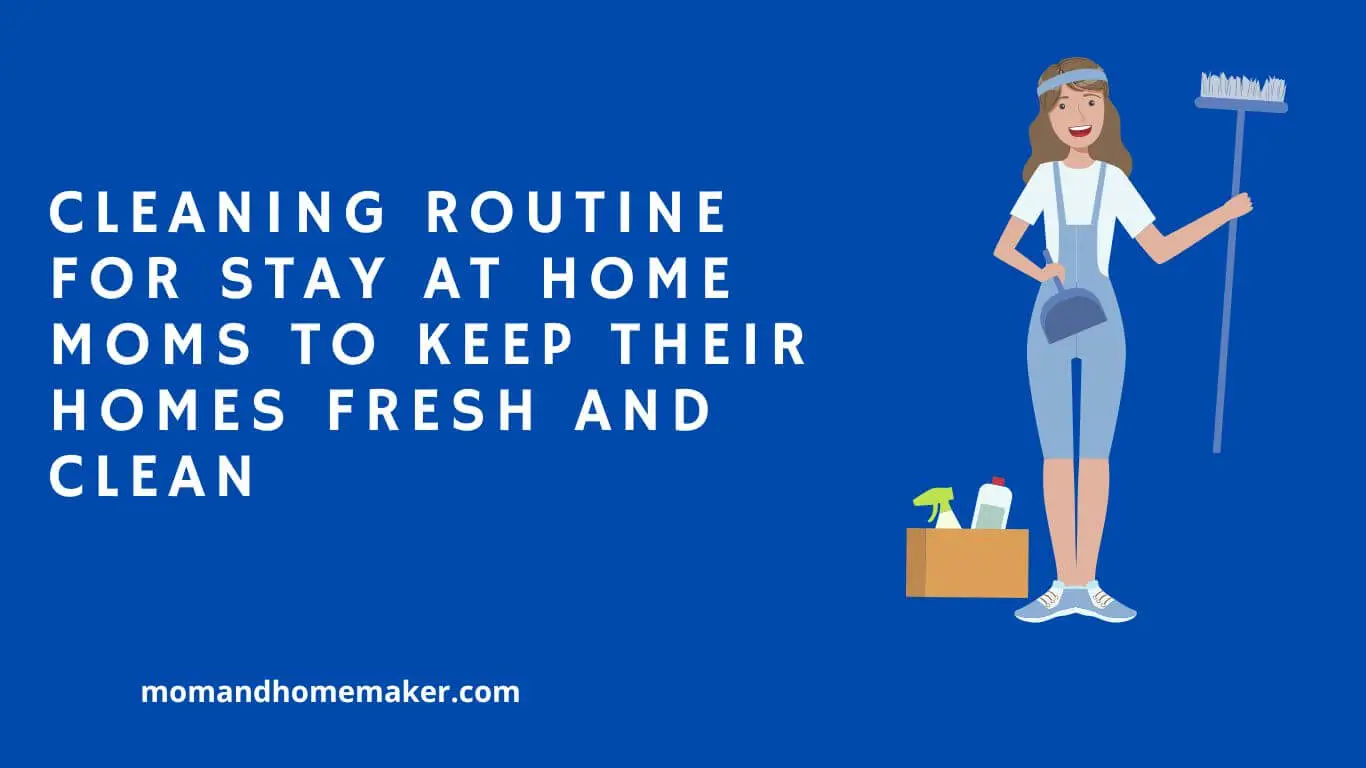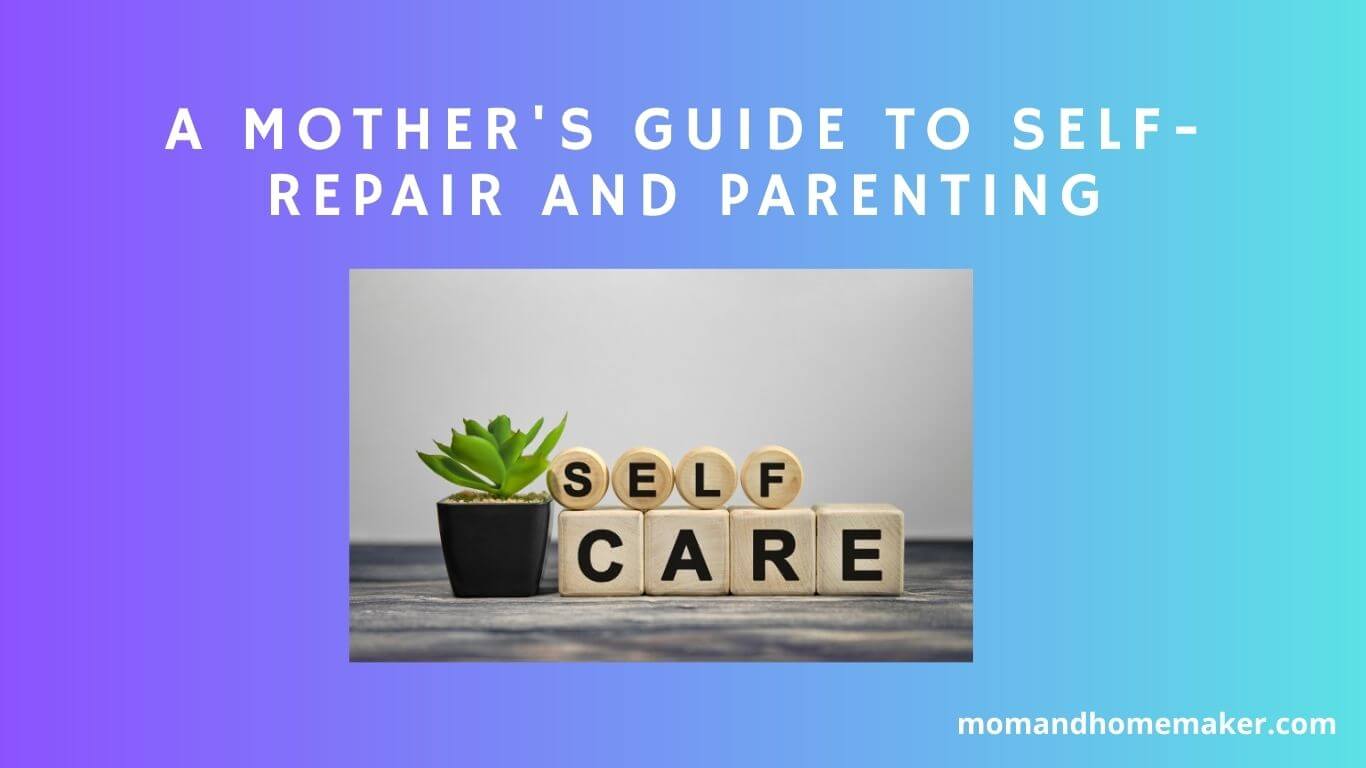As a stay-at-home mom, think of yourself as the conductor of a symphony, coordinating various tasks to create a harmonious family life.
The question of your responsibilities can be complex, impacting your daily routine and overall family dynamics.
Consider how each task contributes to your family’s well-being and the smooth running of your household.
Childcare Duties
As a stay-at-home mom, your primary responsibilities while caring for children include ensuring their safety, providing nourishment, and fostering their development. Your parenting strategies significantly influence your child’s growth and development.
It’s crucial to strike a balance between structured activities and free play throughout the day. Engaging in activities like reading time, educational games, and art projects can support your child’s cognitive and emotional growth.
Moreover, allowing for free play enables children to explore their creativity and develop social skills through interactions with siblings or peers.
Child development plays a vital role in your childcare duties. Incorporating educational activities not only entertains children but also contributes to their overall growth.
Activities such as puzzles, building blocks, or simple science experiments can be both enjoyable and educational, stimulating their curiosity, problem-solving abilities, and hand-eye coordination. Additionally, prioritizing outdoor playtime is essential for physical development and overall well-being.
Your role as a stay-at-home mom is paramount in your child’s life. Your attention, care, and guidance significantly impact their upbringing.
By implementing effective parenting strategies, finding the right balance between playtime and educational activities, and focusing on their development, you’re laying a strong foundation for your child’s future.
Household Chores
Managing household chores efficiently is crucial for a stay-at-home mom to create a well-organized and comfortable living environment for her family. Here are some essential aspects to consider when handling household tasks:
- Cleaning Routine
Maintaining a consistent cleaning schedule is key. Regularly vacuuming, dusting, and mopping floors will help keep your home clean and tidy. Don’t overlook cleaning high-touch surfaces like doorknobs and light switches to prevent the spread of germs.
- Home Maintenance
Staying on top of home maintenance tasks is important to prevent bigger issues. This includes changing air filters, checking smoke detectors, and scheduling regular pest control services. Addressing minor repairs promptly can save you from major headaches later on.
- Laundry Management
Stay organized with laundry by sorting clothes, folding them promptly, and putting them away. Keeping up with laundry ensures that everyone has clean clothes when they need them.
- Organization and Decluttering
Regularly decluttering and organizing your living spaces can make a significant difference in the overall feel of your home. Establishing storage systems and decluttering unused items can create a more peaceful and functional living environment for your family.
Meal Planning and Cooking
Managing meal planning and cooking as a stay-at-home mom requires creating a weekly menu that suits your family’s tastes and dietary needs. Consider what your family enjoys eating and what foods are nutritious.
Efficiency in meal prep is crucial for saving time and effort. Batch cooking basics like grains, proteins, and veggies can be a time-saver for multiple dishes. Repurposing leftovers for the next meal can also cut down on cooking time.
Keeping meals interesting and varied involves being creative in the kitchen. Experiment with different recipes, flavors, and cooking methods to provide a diverse dining experience.
Involving your children in meal planning can be a fun bonding activity and a way to teach cooking skills. Try themed dinner nights or explore new cuisines to keep things exciting.
Remember to account for any dietary restrictions or allergies when planning meals to ensure everyone can enjoy the food. Prioritizing efficiency in meal prep and embracing culinary creativity can streamline the cooking process and bring delicious meals to your family’s table.
Grocery Shopping
To effectively manage meal planning and cooking as a stay-at-home mom, your next step is handling the crucial task of grocery shopping. Here are four important points to consider when diving into the world of grocery shopping:
- Budget-Friendly Choices: Focus on buying ingredients for meals that are both healthy and affordable. Opt for economical staples like beans, lentils, rice, and seasonal vegetables to whip up delicious and wallet-friendly dishes for your family.
- Meal Organization: Structure your grocery list around the meals you plan to cook for the week. This will help you stay on track, avoid unnecessary purchases, and ensure you have all the required ingredients ready when it’s time to start cooking.
- Online Grocery Options: Explore the convenience of online grocery shopping services to save time and energy. Many stores offer online platforms where you can pick your items, compare prices, and have your groceries delivered to your doorstep, making the process more convenient for you.
- Meal Preparation: After purchasing your groceries, take some time to wash, chop, and store ingredients for easy access throughout the week. Preparing in advance can streamline your cooking routine and make meal times less stressful.
School and Extracurricular Activities
Efficiently managing school and extracurricular activities is a crucial part of your role as a stay-at-home mom. Your involvement in your child’s school life is vital for their academic success and overall well-being. Understanding their school curriculum, staying in touch with teachers, and assisting with homework are important tasks.
Balancing school involvement with extracurricular activities is key. Encouraging your child to explore their interests through extracurriculars while making sure they’ve enough time for schoolwork is a rewarding responsibility.
Skills like time management and activity coordination will help you handle school and extracurricular commitments. Creating a schedule that includes study time, school projects, and extracurricular activities can keep you organized and ensure your child is on top of their responsibilities.
Coordinating transportation to and from activities, making sure they have the necessary equipment, and supporting them during performances or competitions are all part of your role in their extracurricular pursuits.
Doctor Appointments and Healthcare
Efficiently managing doctor appointments and ensuring your child’s healthcare needs are met is vital for stay-at-home moms. Here are some essential tips for handling doctor appointments and healthcare for your family:
- Regular Preventive Care: Make sure to schedule and organize routine check-ups for your child, including vaccinations and screenings. Keeping up with preventive care is key to catching any health issues early.
- Explore Telemedicine Options: Look into telemedicine services for non-emergency consultations or follow-ups. This can be especially useful for minor illnesses or when it’s difficult to visit the doctor in person.
- Understand Health Insurance Coverage: Take the time to understand your health insurance policy, including coverage for doctor visits, medications, and procedures. Stay informed about any changes in coverage and ensure necessary treatments are included.
- Organize Medical Records: It’s important to maintain well-organized medical records for your child and the entire family. Keep track of essential information such as allergies, medications, and past treatments. This can help healthcare providers deliver better care and maintain consistency in treatment.
Financial Management
Establishing a clear and effective budget is essential for managing your family’s finances as a stay-at-home mom. Budgeting helps you make wise decisions about household expenses and ensures that you make the most of your family’s income. Here are some practical budgeting tips to guide you:
Budgeting Tips:
| Budgeting Tips | Description | Action |
|---|---|---|
| Track Expenses | Keep a detailed record of all expenses | Monitor spending |
| Set Financial Goals | Define short and long-term financial objectives | Save and invest wisely |
| Emergency Fund | Save for unexpected financial needs | Prepare for emergencies |
| Categorize Expenses | Allocate spending into specific categories | Identify areas to reduce expenses |
| Review Regularly | Regularly review and adjust your budget | Make necessary changes as needed |
In addition to budgeting, exploring investment strategies can help grow your family’s wealth over time. As a stay-at-home mom, you can consider various investment options to secure your family’s financial future.
It’s important to understand the basics of investing and seek professional advice when necessary to make informed decisions aligned with your risk tolerance and financial goals.
Time Management
Balancing your responsibilities as a stay-at-home mom requires effective time management. Prioritize tasks based on importance and urgency to ensure you can handle everything efficiently.
Here are some practical tips to help you optimize your time:
- Set Up a Daily Schedule: Plan your day ahead of time, assigning specific slots for tasks like household chores, childcare, cooking, and personal time. A structured schedule can boost productivity and prevent tasks from piling up.
- Delegate Tasks: Involve your children in age-appropriate chores and ask your partner to help with household responsibilities. Sharing tasks can lighten your load and free up time for other essential activities.
- Use Time-Saving Strategies: Find ways to streamline your tasks, such as meal prepping, organizing with technology, and combining errands to save time. Embracing these techniques can create more time for relaxation and self-care.
- Stay Flexible: While having a schedule is beneficial, it’s important to remain adaptable. Unexpected situations may arise, so being flexible and adjusting your plans as needed can help you manage your time effectively without feeling overwhelmed.
Emotional Support for Family
Balancing your responsibilities as a stay-at-home mom involves not only managing your time effectively but also providing crucial emotional support for your family. Your role extends beyond physical care to nurturing the mental health and emotional well-being of your loved ones.
Here are key areas where your emotional support can significantly impact your family’s life:
| Support Area | Description | Importance |
|---|---|---|
| Mental Health Support | Being a listening ear, encouraging open communication, and seeking help when needed. | Vital for overall well-being. |
| Family Relationships | Building strong bonds, resolving conflicts, and fostering harmony within the family. | Foundation for a healthy family. |
| Parenting Challenges | Offering guidance, understanding, and patience during tough parenting situations. | Helps navigate difficulties. |
| Emotional Well-Being | Promoting positivity, showing empathy, and providing comfort and reassurance. | Enhances family resilience. |
Maintaining Family Schedules
Managing multiple family schedules can be a tough but crucial part of being a stay-at-home mom. It’s important to plan carefully and stay organized to make sure everyone’s commitments are met while still making time for quality moments together. Here are some key tips for keeping family schedules on track:
- Family Time: Make sure to plan regular activities that bring the family together, like game nights, picnics, or movie marathons. These moments help strengthen bonds and create lasting memories.
- Quality Time: Set aside a specific time in the schedule for one-on-one interactions with each family member. Whether it’s reading a bedtime story to your child or having a heart-to-heart talk with your partner, these moments are precious.
- Daily Routine: Establish a structured daily routine that includes time for meals, chores, homework, playtime, and relaxation. Consistency in the daily schedule can provide a sense of stability for the whole family.
- Time Management: Use tools like calendars, to-do lists, and digital apps to stay organized and keep track of appointments, extracurricular activities, and other commitments. Effective time management is key to ensuring that everyone feels supported and no one is overwhelmed by conflicting schedules.
Home Organization and Tidiness
Maintaining home organization and tidiness is key to keeping your household running smoothly as a stay-at-home mom. Your role in home decor and organization plays a vital part in creating a cozy and inviting atmosphere for your family.
By establishing specific places for items and using storage solutions like bins and shelves, you can prevent clutter from taking over. Regularly decluttering and tidying up rooms will help keep your space neat and visually pleasing.
To excel in home organization, it’s important to have a system in place. Setting aside time for daily tasks and sticking to a cleaning routine can make a big difference. Consider creating a schedule that works for your family and assigning specific cleaning tasks to each day.
Whether you tackle one room at a time or use efficient cleaning products, finding strategies that work for you will help you manage the workload effectively.
A clean home isn’t just about appearances—it also contributes to the well-being of your family. A tidy space can promote mental clarity and relaxation, creating a harmonious environment for everyone to enjoy. By staying proactive in maintaining order and cleanliness, you’re setting the stage for a happy and thriving household.
Pet Care Responsibilities
Managing pet care responsibilities as a stay-at-home mom is crucial for the well-being of your furry companions. Here are some practical tips to help you effectively fulfill your pet care duties with love and dedication:
- Pet Grooming and Exercise:
Schedule regular grooming sessions to keep your pets clean and healthy. Brush their fur, trim their nails, and bathe them as needed. Ensure they get enough exercise through daily walks, playtime, or interactive toys to stay active and maintain a healthy weight.
- Training and Socialization:
Invest time in training your pets using positive reinforcement techniques to teach good manners and basic commands. Socialize them with other animals and people by introducing them to new experiences in a controlled environment. This helps them feel comfortable and confident in various situations.
- Regular Vet Check-ups:
Stay proactive about your pets’ health by scheduling routine check-ups with the veterinarian. Vaccinations, parasite control, and preventive care are essential for their long-term well-being. Address any health concerns promptly to prevent complications.
- Quality Time and Affection:
Build a strong bond with your pets by spending quality time with them. Show them love, attention, and affection through activities like cuddling, playing, or simply being present. Your furry friends will appreciate the care and attention you provide, enhancing their overall happiness and health.
Volunteer and Community Involvement
Getting involved in volunteer work and community activities can truly enhance your life and the lives of those around you. As a stay-at-home mom, you have a special opportunity to make a positive impact through various service opportunities in your community. Volunteering allows you to give back, connect with others, and build a strong support system.
Consider partnering with nonprofits that support causes you’re passionate about. By working with organizations focused on social impact, you can contribute your time and skills to meaningful projects. This involvement not only benefits the community but also helps you grow personally and professionally.
Networking through volunteer work can lead to new friendships, opportunities, and a sense of fulfillment. By engaging in community activities, you can expand your horizons, learn new skills, and stay connected with the world beyond your home.
Whether you’re participating in local events, organizing donation drives, or helping out at a shelter, your contributions can make a real difference.
Personal Self-Care and Well-Being
Prioritizing self-care is crucial for stay-at-home moms to maintain their overall well-being. Here are some practical ways to take care of yourself:
- Establish a Daily Routine: Create a daily self-care routine that includes activities like meditation, yoga, or journaling. It’s important to focus on your physical health by maintaining a balanced diet and incorporating regular exercise into your routine.
- Check Your Mental Health: Regularly check in with your mental health and don’t hesitate to seek professional help if needed. Engage in activities that help you relax and unwind, such as reading a book, taking a bath, or going for a walk.
- Make Time for Hobbies: Set aside time for activities you enjoy, whether it’s painting, gardening, or cooking. Engaging in personal hobbies can help reduce stress and improve your overall mood.
- Practice Relaxation Techniques: Incorporate relaxation techniques like deep breathing exercises or mindfulness meditation to calm your mind and reduce stress levels. Finding moments to relax and unwind is essential for your well-being as a stay-at-home mom.
Communication With Spouse and Family
Effective communication with your spouse and family is crucial for maintaining a healthy and connected family dynamic as a stay-at-home mom. Communication with your spouse is the foundation of a strong partnership, fostering understanding, support, and shared decision-making.
Initiate open discussions with your spouse about daily schedules, finances, and emotional needs. By actively listening to each other, conflicts can be resolved, and mutual respect can be nurtured.
Family discussions are essential for maintaining relationship dynamics and unity within the family. Encourage open communication within your household by organizing regular family meetings where everyone can share their thoughts, feelings, and experiences.
Engage your children in age-appropriate conversations, allowing them to express themselves and feel heard. Involving your family in decision-making processes fosters a sense of belonging and teamwork.
Remember that effective communication involves not just speaking but also listening attentively and empathetically. Validate the feelings and opinions of your spouse and family members, creating a safe space for honest expression.
Through transparent and respectful communication, you can strengthen the bonds within your family, promoting harmony and understanding. Prioritize meaningful interactions and quality time spent together to nurture love, trust, and togetherness.
Conclusion
Being a stay-at-home mom means juggling a lot of responsibilities, from looking after the kids to keeping up with household tasks. It’s easy to feel overwhelmed by all the tasks at hand, but it’s crucial to remember to take care of yourself too.
Finding a balance and prioritizing self-care amid the chaos is essential. Ask yourself if you’re truly tending to your well-being while taking care of everyone else. Remember, your health and happiness are just as important as the tasks on your to-do list.













